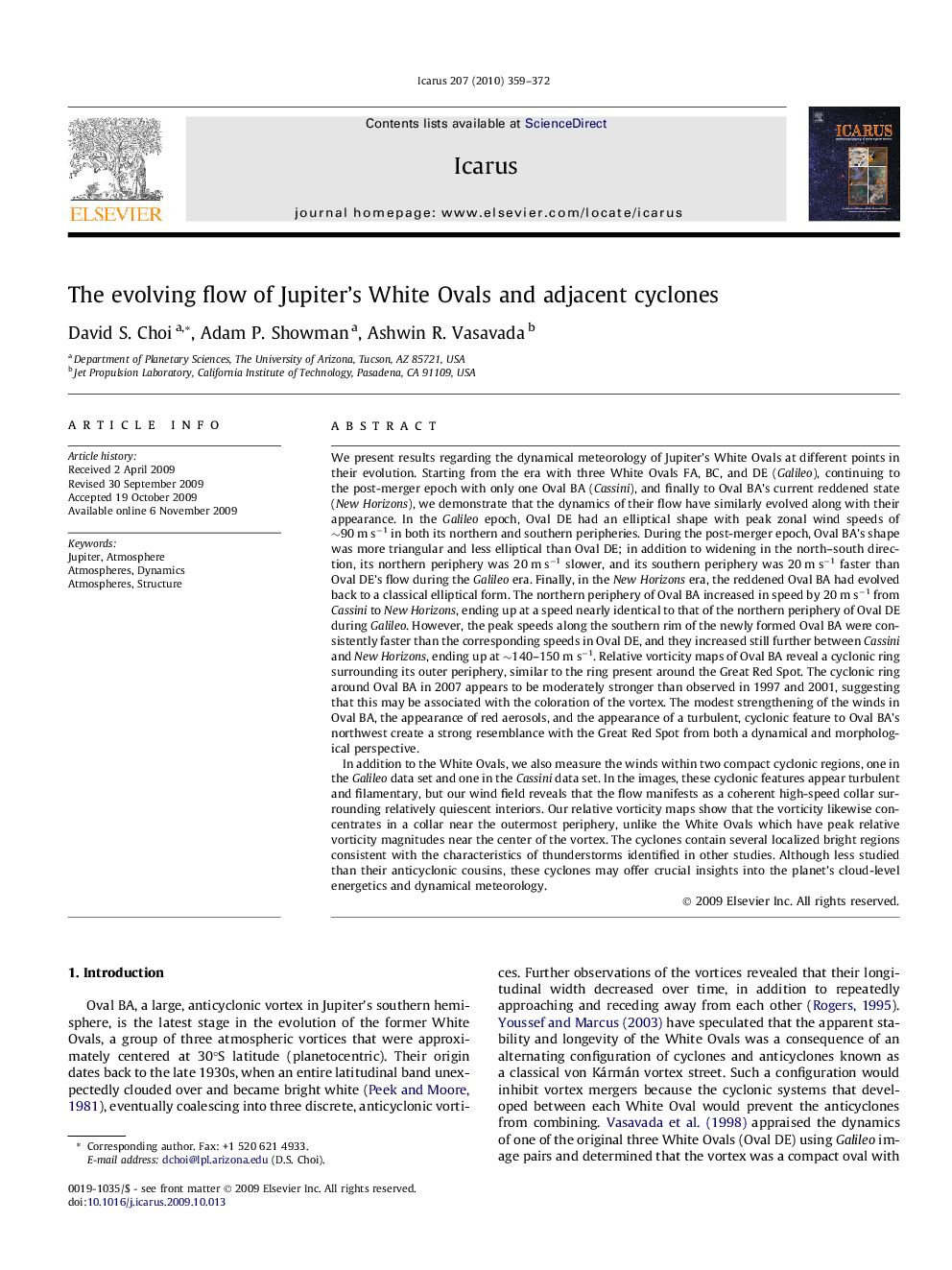| Article ID | Journal | Published Year | Pages | File Type |
|---|---|---|---|---|
| 1774496 | Icarus | 2010 | 14 Pages |
Abstract
In addition to the White Ovals, we also measure the winds within two compact cyclonic regions, one in the Galileo data set and one in the Cassini data set. In the images, these cyclonic features appear turbulent and filamentary, but our wind field reveals that the flow manifests as a coherent high-speed collar surrounding relatively quiescent interiors. Our relative vorticity maps show that the vorticity likewise concentrates in a collar near the outermost periphery, unlike the White Ovals which have peak relative vorticity magnitudes near the center of the vortex. The cyclones contain several localized bright regions consistent with the characteristics of thunderstorms identified in other studies. Although less studied than their anticyclonic cousins, these cyclones may offer crucial insights into the planet's cloud-level energetics and dynamical meteorology.
Related Topics
Physical Sciences and Engineering
Earth and Planetary Sciences
Space and Planetary Science
Authors
David S. Choi, Adam P. Showman, Ashwin R. Vasavada,
